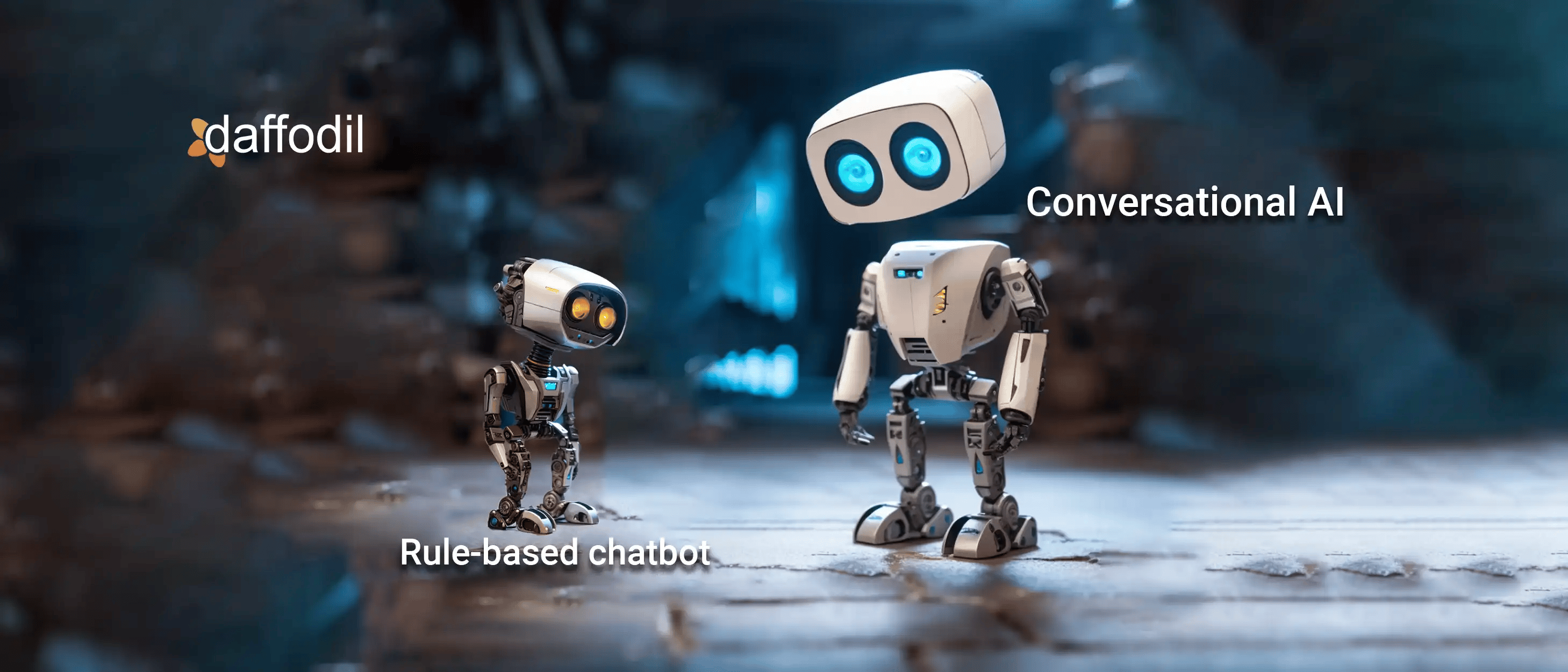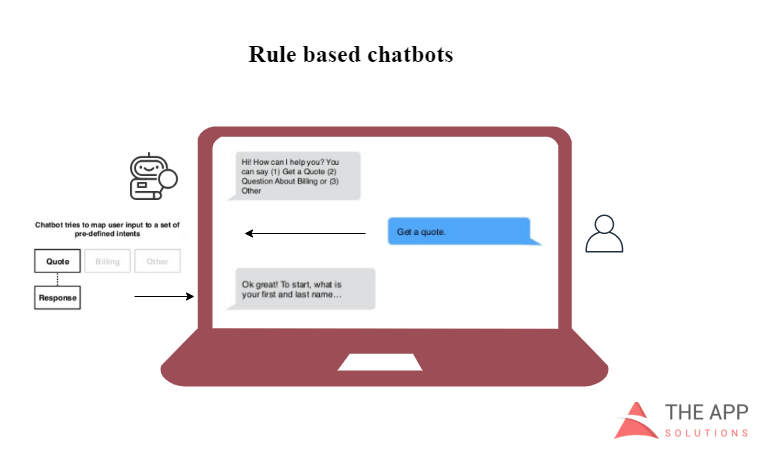
The way businesses interact with their customers has drastically changed in recent years, thanks to the rise of chatbots. Once considered a novelty, chatbots have become a crucial part of the digital landscape, changing how companies provide customer service, sales support, and more.
However, chatbots have come a long way from their simple rule-based beginnings. With the advent of technology like Gemini AI or ChatGPT, powered by massive language models, chatbots are now capable of complex conversations, nuanced context interpretation, and even generating responses that sound just like a human.
In this blog post, we'll explore the evolution of chatbots, from their humble beginnings to the latest advances in AI-driven conversational agents. We’ll delve into the key concepts, functionalities, and advancements that have shaped the field of chatbots today.
How have Chatbots Evolved Over Time?
The history of chatbots dates back to the mid-20th century, with Alan Turing's research on machine intelligence. However, it was not until the 1960s that the first chatbot, ELIZA, was created by Joseph Weizenbaum. Despite early attempts, chatbots were still considered an emerging technology that was not quite ready for prime time.
As chatbots evolved, they transitioned from simple text-based interfaces to more sophisticated voice-activated systems. These conversational agents also found their way into our mobile devices as personal assistants, capable of responding to a wide range of inputs including text, audio, images, and videos.
.jpg?width=1024&height=576&name=The-History-of-Chatbot%20(1).jpg)
Image source: Dash tech
One of the earliest personal assistants, Siri, was introduced by Apple in 2010 and quickly gained popularity. Other tech giants soon followed with their own virtual assistants, such as Google Now, Amazon Alexa, and Microsoft Cortana.
The latest entrant in this field is Gemini AI, which is still in the development phase but is expected to even surpass the capabilities of ChatGPT.
READ MORE: What Makes Google's Gemini the Next-level AI Model to Watch Out For?
However, at the beginning of chatbot development, the technology was limited to rule-based systems that could only answer a set of predetermined questions. These first-generation chatbots had several limitations, including a lack of intelligence and poor user experience.
As a result, building and implementing these chatbots required significant time and resources from data scientists and engineers. They were not cost-effective as they provided limited benefits compared to the effort required to build and train them manually.
Let’s understand more about these rule-based chatbots.
What are Rule-based Chatbots?
These scripted chatbots are one of the earliest types of chatbots that were developed to interact with users. These chatbots operate based on a set of pre-determined rules or scripts, which provide them with the ability to generate responses to user inputs.
To achieve this, developers create a script that outlines the possible interactions and responses the chatbot is designed to provide. This script is created based on frequently asked questions and expected interactions that the chatbot is supposed to handle. The chatbot is trained using pre-defined sets of entities and contexts that enable it to understand the user's intent and respond with a pre-defined response format.

For instance, if a user asks a question such as "What is the temperature like in New York City?", the chatbot's script will contain a conditional statement that looks for keywords like "temperature" and "New York" and responds with a pre-defined answer such as "The current temperature in New York City is 25 degrees Celsius."
While rule-based chatbots can be effective in handling simple queries, they have their limitations. These chatbots can only handle specific questions and commands that have been pre-programmed into their system. If a user inputs a question outside the pre-defined context, the chatbot may not be able to provide a suitable response.
Limitations of Rule-Based Chatbots
Although rule-based chatbots were once at the forefront of conversational AI, they are limited in their ability to handle complex user interactions. Here are some of the reasons why:
- Rule-based chatbots can struggle to understand natural language, making it difficult for them to interpret complex queries that deviate from their pre-defined patterns. This can result in a frustrating user experience, as the chatbot fails to provide the intended response.
- Building a rule-based chatbot can be a complex process, requiring significant resources and expertise to develop a script that covers all possible user inputs and responses. This can make it difficult to scale up or improve the chatbot over time.
- Rule-based chatbots are limited by the specific set of rules they have been programmed with and lack the ability to interpret user intent beyond those rules. As a result, they cannot modify their responses to reflect the user’s current context, leading to a lack of personalization and potentially unhelpful responses.
- Effective communication often requires the ability to handle ambiguity, but rule-based chatbots can struggle to respond effectively to uncertain or ambiguous inputs. This can lead to confusion and frustration on the part of the user
- These chatbots lack the ability to learn or adapt based on user interactions, as they are incapable of using machine learning algorithms to improve their responses over time. This means that they will continue to rely on their predefined rules, even if those rules are outdated or ineffective.
However, with advancements in artificial intelligence and machine learning, chatbots have come a long way since their early days. Today, AI-powered chatbots can recognize natural language, learn from user interactions, and provide personalized responses in real-time.
Generative AI technologies such as Gemini AI, ChatGPT, BARD, and Jasper AI are at the forefront of this transformation. They have become integral to modern business communication and offer numerous benefits, including reduced response time, round-the-clock availability, and improved customer engagement.
But have you ever wondered how chatbots can understand and respond to our queries with such accuracy and efficiency? The answer lies in Large Language Models (LLMs), which are trained on massive datasets containing billions of words, phrases, and sentences. Using a combination of deep learning algorithms, neural networks, and natural language processing techniques, LLMs are capable of comprehending the intricacies of human language and generating human-like responses.
One of the most significant advantages of LLMs is their ability to learn from big data and continuously improve their performance over time. Unlike rule-based chatbots, LLMs can adapt to new information and generate responses that are tailored to the user's specific needs. With their immense size and sophisticated architecture, LLMs have revolutionized the field of natural language processing and opened up new possibilities for intelligent conversational systems.
Today, there are several popular LLMs that are widely used in the industry, such as PaLM-2, GPT-3, BERT, and XLNet. Each of these models has its strengths and weaknesses, and businesses can choose the one that best fits their needs. With LLMs, the possibilities for intelligent chatbots and conversational systems are endless, and we can expect to see more exciting developments in this field in the future.
READ MORE: Top 10 Pre-Trained NLP Language Models
CHATBOTS: Then Vs Now
Early Days: Chatbots as Customer Service Replacement
In the early days, chatbots were primarily used as a replacement for customer service providers. They were an efficient way for businesses to offer 24/7 customer support without the need for human intervention. However, their functionality was limited, and they were mainly used for simple conversations.
Now: Chatbots as Business App Alternative
Fast forward to today, and chatbots are capable of much more than just simple conversations. They have become an alternative to mobile apps and can perform complex transactions and handle complex queries of customers. Chatbots are now used by businesses of all industries for placing orders, checking the status of orders, booking flight tickets, making financial transactions, improving marketing campaigns, and much more. In short, chatbots have become the new apps for businesses.
Improved UI
As chatbots have evolved, the way they interact with users has also changed. The traditional user interface has been replaced with a Conversational User Interface (CUI) that enables natural language processing (NLP) to understand and respond to human language. NLP also allows chatbots to analyze user sentiment and process unstructured inputs, such as queries with spelling mistakes.
Moreover, chatbots now incorporate various UI elements, including carousels, buttons, quick replies, web views, and group chats. These elements enhance the user experience by allowing users to interact with chatbots using graphics and multimedia, such as audio, video, document files, images, and GIFs.
Customer Success Story: Explore how Daffodil leveraged cutting-edge technologies to develop an AI chatbot for a US-based health tech firm
Omni-channel Integration
Chatbots can now offer omni-channel integration. This means that they are no longer standalone tools but can seamlessly integrate with other channels such as email, social media, and phone to provide a more unified customer experience. This helps businesses offer a consistent brand experience across different touchpoints, making it easier for customers to interact with them.
Personalization and Context-Awareness
Personalization has become a key aspect of chatbot technology. AI Chatbots can store user information and history to provide personalized recommendations and responses. Additionally, chatbots can use context awareness to understand the user's current situation and provide relevant information and suggestions.
Improved Analytics and Reporting
As chatbots become more integrated with businesses, it has become increasingly important to measure their effectiveness. Improved analytics and reporting tools are now available, allowing businesses to track and analyze chatbot interactions and adjust their strategies accordingly.
Develop Your Own AI Chabot to Enhance Customer Experience
The advancements in machine learning algorithms and massive training data have enabled chatbots to perform a wide range of language tasks with high accuracy and coherence, mimicking human-like language. Despite the concerns surrounding their size and energy consumption, the potential benefits of chatbots are undeniable, and they continue to drive innovation and research in the field of artificial intelligence.
As businesses look to improve their operations, customer service, and efficiency, chatbots present an excellent opportunity. So, if you need further assistance, our AI experts are available for you. They can analyze your business needs and recommend the best use cases and technology stack for chatbot development. Book a free strategic session with our AI Center of Excellence team.





